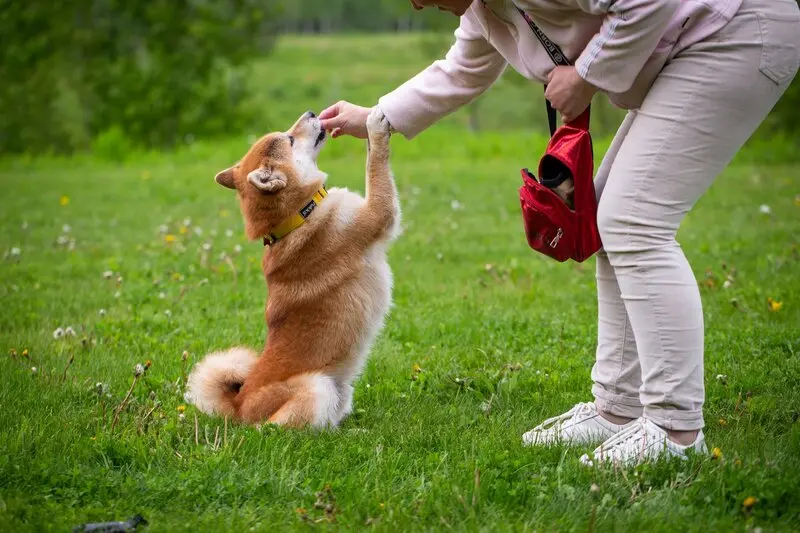
How to Teach Your Dog Basic Tricks: Step-by-Step Training Guide
Teaching your dog basic tricks is a fun and rewarding way to strengthen your bond, provide mental stimulation, and improve their behavior.
Whether you’re training a puppy or an adult dog, this step-by-step guide will help you master dog training techniques for popular tricks like sit, stay, come, and shake.
Trending Now!!:
By incorporating positive reinforcement and consistency, you’ll have your furry friend performing tricks in no time.
Below, we’ll explore how to train your dog, using working strategies like dog tricks, puppy training, and positive reinforcement training to ensure this guide works well for you.
Why Teach Your Dog Tricks?
Training your dog to perform tricks offers numerous benefits:
- Mental Stimulation: Keeps your dog’s mind sharp and engaged.
- Improved Behavior: Commands like “sit” and “stay” promote obedience.
- Stronger Bond: Training sessions build trust and communication.
- Fun and Engagement: Tricks like “roll over” or “shake” entertain both you and your dog.
With the right approach, dog obedience training can be enjoyable and effective.
Let’s dive into the step-by-step guide to teaching your dog basic tricks.
Step 1: Gather Your Training Supplies
Before you begin, gather these essentials for effective dog training:
- High-Value Treats: Use small, tasty treats your dog loves, such as freeze-dried liver or soft chews.
- Clicker (Optional): A clicker can mark desired behaviors for clicker training.
- Leash and Collar: Useful for commands like “come” or “stay.”
- Quiet Space: Choose a distraction-free area for focused puppy training sessions.
Pro Tip: Keep training sessions short (5–10 minutes) to maintain your dog’s attention and prevent frustration.
Step 2: Master the “Sit” Command
The “sit” command is one of the easiest and most essential basic dog tricks. It’s a foundation for other commands and great for dog behavior training.
- Hold a Treat: Position a treat near your dog’s nose.
- Guide the Behavior: Slowly move the treat up and back over their head. As their bottom lowers to the ground, say “sit.”
- Reward Immediately: When your dog sits, give them the treat and praise them enthusiastically.
- Repeat: Practice 5–10 times per session, gradually phasing out the treat lure.
Pro Tip: Incorporate “how to teach a dog to sit” naturally into your practice to reinforce this foundational trick.
Step 3: Teach the “Stay” Command
The “stay” command is critical for dog obedience training and ensures your dog remains in place until released.
- Start with Sit: Ask your dog to sit.
- Introduce the Cue: Hold your hand out (palm facing the dog) and say “stay.”
- Step Back: Take one step back, then immediately return and reward your dog if they remain seated.
- Increase Distance and Time: Gradually increase the distance and duration of the stay, rewarding each success.
- Release Cue: Use a word like “okay” to signal they can move.
Pro Tip: Use positive reinforcement training by rewarding small successes to build confidence.
Step 4: Train the “Come” Command
The “come” command is vital for safety and is a key part of recall training for dogs.
- Start on a Leash: In a controlled environment, gently pull the leash toward you while saying “come.”
- Reward Approach: When your dog moves toward you, reward them with a treat and praise.
- Practice Off-Leash: In a secure area, practice calling your dog from short distances, gradually increasing the range.
- Add Distractions: Once reliable, practice in busier environments to reinforce the command.
Step 5: Teach the “Shake” Trick
The “shake” trick is a fun, crowd-pleasing addition to your dog’s tricks repertoire.
- Start with Sit: Have your dog sit.
- Offer Your Hand: Hold your hand near one of their front paws and say “shake.”
- Encourage Paw Movement: If they lift their paw, gently grasp it, reward, and praise.
- Repeat and Refine: Practice until your dog offers their paw on command without assistance.
Pro Tip: Be patient, as some dogs may take longer to learn this fun dog trick.
Step 6: Use Positive Reinforcement for Success
Positive reinforcement training is the most effective method for teaching dog tricks.
Always reward desired behaviors with treats, praise, or play, and avoid punishment, which can create fear and confusion. Consistency is key—use the same cues and rewards each time to reinforce learning.
Step 7: Troubleshoot Common Challenges
- Lack of Focus: If your dog is distracted, choose a quieter environment or use higher-value treats.
- Slow Progress: Break tasks into smaller steps and reward incremental successes.
- Stubborn Behavior: Ensure training sessions are fun and not overly long to maintain engagement.
Step 8: Practice and Expand
Once your dog masters these basic dog tricks, practice regularly to reinforce them. You can also expand to advanced tricks like:
- Roll Over: Lure your dog into rolling with a treat.
- Spin: Encourage turning in a circle with a treat.
- Play Dead: Teach your dog to lie down dramatically on cue.
Pro Tip: Search for “advanced dog tricks” to find inspiration for keeping training sessions exciting.
Additional Tips for Successful Dog Training
- Be Patient: Every dog learns at their own pace.
- Keep It Fun: Use play and enthusiasm to make dog training sessions enjoyable.
- Train Regularly: Short, daily sessions are more effective than infrequent, long ones.
- Socialize Your Dog: Pair training with socialization to improve overall behavior.
Conclusion
Teaching your dog basic tricks like sit, stay, come, and shake is a fantastic way to enhance their obedience and deepen your bond. By following this step-by-step dog training guide and using positive reinforcement training, you’ll set your dog up for success.
Incorporate these dog training tips into your routine, and soon your pup will be wowing everyone with their skills. For more resources, check out dog obedience training guides or consult a professional trainer for personalized advice.
Call to Action: Start your puppy training journey today!
Share your dog’s progress in the comments or explore advanced dog tricks to keep the fun going.



Super helpful! I appreciate the clear explanations and practical examples you’ve included.